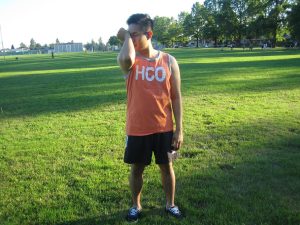A broken nose is also known as a nasal fracture which is a crack or break in a bone in the nose, usually the bone over the bridge of the nose. It can be caused by injuries such as a punch to the face or a fall, playing contact sports, vehicular accidents, physical fights and facial trauma caused by accidents. A broken nose causes pain, swelling and bruising under the eyes and around the nose. In most cases, the nose is crooked and there is difficulty in breathing.
Symptoms

- There is swelling on the nose and the surrounding areas
- Discharge of mucus coming from the nose
- Bleeding from the nose
- Tenderness and pain when touching the nose
- Misshapen or curved nose
- A sensation that the nasal passages are being blocked
- A bruising around the eyes or nose
Causes
- Physical altercations
- Vehicular accidents
- Falls
- Injury caused by contact sports such as football or hockey
- Walking into steady objects such as a door or a wall or performing rough, wrestling-type of play.
Complications
- A broken nose can cause pools of clotted blood which will cause a condition known as septal hematoma.
- If a broken nose is caused by a strong blow from a vehicular accident, there is a high risk of cartilage fracture.
- A vehicular accident can cause injuries to the neck. If the blow is strong enough to break the nose, it can cause damage to the bones found in the neck.
Treatment
- When a break happens, allow the affected person to breathe through the mouth and lean forward in order to lessen the amount of blood that drains out of the throat.
- Apply an ice pack immediately after the injury for 10-15 minutes at least four times every day for the first 24-48 hours in order to lessen the swelling. Wrap a few ice cubes in a clean wash cloth to help prevent frostbite and avoid applying too much pressure.
- Take the prescribed over-the-counter pain medications such as acetaminophen and ibuprofen to minimize the pain.
- Elevate the head especially during sleeping in order to help minimize swelling and throbbing of the affected area.
- For the first two weeks of treatment, avoid playing any sports especially contact sports for at least six weeks after the injury.
- Avoid wearing glasses until the swelling is minimized and avoid picking or blowing the nose until it is totally healed.
If the pain becomes severe and cannot be minimized by commonly used pain medications, the swelling is worse, the nose appears crooked or misaligned, bleeding that comes and goes and fever, it is best seek medical help immediately.
